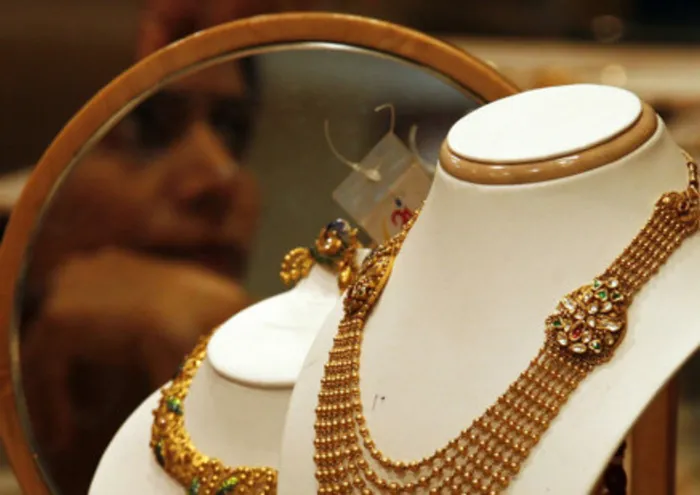Gold set for weekly rise

A woman is reflected on a mirror inside a gold jewellery shop in the western Indian city of Ahmedabad. A woman is reflected on a mirror inside a gold jewellery shop in the western Indian city of Ahmedabad.
Gold steadied on Friday but stayed on track for its first weekly gain in three weeks, as growing confidence in a prompt deal between European leaders and Greece over its second bailout lifted the euro and so-called higher risk assets like stocks.
The euro neared three-week highs against the dollar, giving the bullion price a lift from non-US investors, who find it cheaper to buy gold when their own currencies rise against the greenback.
Spot gold was at $1,727.30 an ounce at 16:42 SA time against $1,728.40 late in New York on Thursday, and was set for a 0.2 percent rise this week, the first weekly gain since the end of January.
Optimism was growing that Greece had finally done enough to secure a second bailout after it set out extra budget savings, while robust US data this week gave investors more confidence to take on more risk.
Usually, gold declines in such a scenario, but its tight correlation with the euro means the gyrations in the single European currency are exerting a greater impact on bullion than simple safe-haven demand.
“Gold is behaving more like a risky asset and less like a safe haven,” said Commerzbank analyst Daniel Briesemann. “It has basically been dragged along with other commodities and the equity markets, and we think that strength will continue at least in the short term.”
“Fundamentals are currently playing just a minor role in gold price moves. Almost everything is still dependent on macro factors,” he added. “The euro zone is going to play a significant role over the course of the year.”
Spot gold is still set for a 10 percent gain this year, inspired largely by the Federal Reserve's signal that US rates were unlikely to move beyond zero for nearly three more years, which prompted talk of more gold-bullish quantitative easing.
Extremely low interest rates cut the opportunity cost of holding non-interest bearing bullion, while the loose monetary policy pursued by some central banks in recent years has burniched the metal's appeal as a safe store of value.
“We view interest rate and exchange rate trends as bullish (for precious metals), with central bank activity and tail event protection sustaining strong demand for gold,” said Deutsche Bank in a note.
INVESTORS BUY
Holdings of gold in exchange-traded products have risen by over 100,000 ounces this week to 70.343 million ounces, reflecting the ongoing desire to tap into the bullion market.
February options on the SPDR Gold Trust, the world's largest gold-backed ETF, expire later on Friday, with most open interest for strikes close to the money stacked at puts - options to sell shares in SPDR at a given price by the close of trade - at 165.0.
Platinum was the strongest performer of the precious metals complex on Friday, showing a 0.8 percent gain on the day to trade at $1,634 an ounce.
Impala Platinum, the world's second-largest producer of the metal, continues to lose output from its Rustenburg operations, where on Thursday, police clashed with rioting mine workers.
Production at Rustenburg, which accounts for 60 percent of Implat's output, came to a halt a month ago after the company sacked 17,000 employees following a Jan. 12 wildcat strike over bonuses.
The platinum price has risen by more than 10 percent since then, putting it on track for a gain of 3 percent in February and a rise of nearly 18 percent since the start of the year.
Palladium rose 0.4 percent to $691.97 an ounce, while silver rose 0.1 percent to $33.48 an ounce. - Reuters